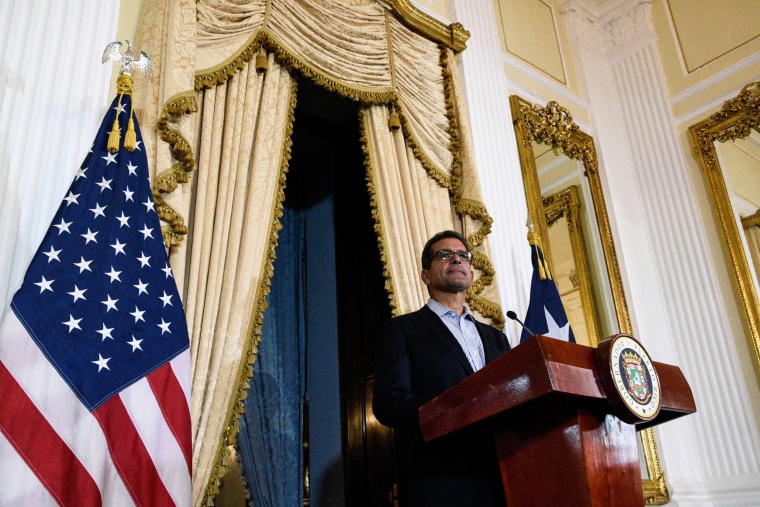The government of Puerto Rico and the federal fiscal oversight board that manages the U.S. territory’s finances have agreed on a debt-restructuring plan that could put an end to the largest bankruptcy proceeding in U.S history, which began in 2017.
Puerto Rico Gov. Pedro Pierluisi told NBC News Thursday that the federal oversight board had agreed to amend their previous version of the plan to eliminate cuts to pensions and provide more funding to the island's public university system, following longstanding disagreements over both issues.
The changes would align with a new law signed by Pierluisi on Wednesday that promises $500 million a year to the University of Puerto Rico until fiscal year 2027 and "zero cuts to pensions of current retirees and current accrued benefits of active public employees."
While the federal oversight board agreed Thursday to roll back its proposed 8.5 percent cut to pensions higher than $1,500, the law remains “very open and ambiguous as to what happens to the pensions of future retirees, people who are still working and contributing to certain public benefit and contribution plans," Sergio Marxuach, a policy director at the Puerto Rico-based nonpartisan think tank Center for a New Economy, told NBC News.
The debt-restructuring agreement now goes to U.S. District Court Judge Laura Taylor Swain, who is handling the bankruptcy proceedings, after a series of court hearings, starting Nov. 8.
If confirmed, the agreement would effectively cut Puerto Rico’s annual public debt payments to $1.1 billion, from $3.3 billion. At the same time, the island’s debt service would be reduced to 7.5 percent, from 25 percent.
Puerto Rico's $70 billion public debt could go down to $34 billion, while debt from the Public Buildings Authority and general obligations bonds could be reduced to $7.4 billion, from $18.8 billion.
“It’ll result in huge savings for Puerto Rico,” Pierluisi said. “We’ll be paying one-third of the debt service we were paying before this bankruptcy process began.”
"I am confident that it's an affordable plan of adjustment, and hopefully we'll have this bankruptcy behind us in the very near future," he said.
But Marxuach said it also means that Puerto Rico would have “committed basically a third of our budget, using this year’s budget as a baseline, and we haven’t even talked about paying public schools, police officers, and any other functions to keep the government of Puerto Rico running."
"To the extent that we have less money available, the more difficult it is going to be to honor all commitments," he said.
The latest debt-restructuring agreement comes after nearly five years of repayment negotiations with bondholders who own Puerto Rico's debt. That debt was accumulated after decades of excessive borrowing, mismanagement and corruption.
The federal fiscal board was created during the Obama administration under the 2016 Promesa law after U.S. laws arbitrarily excluded the U.S. territory from the federal bankruptcy code. The board has been overseeing renegotiations, a process that has resulted in tough austerity measures as Puerto Rico tried jump-starting its economic growth. It has also generated nearly $1 billion in earnings for the attorneys involved.
"The cost of the bankruptcy has been paid with public funds belonging to the government of Puerto Rico, paid by taxpayers in Puerto Rico," Pierluisi said. "All the federal government has done in this, is to provide Puerto Rico with a debt-restructuring mechanism."
Future debt repayments will also be passed down to Puerto Rican residents on the island, a financial commitment that could last at least three decades, Marxuach said.
If Swain rejects the debt-restructuring agreement, the federal fiscal oversight board and bondholders will have to pursue more negotiations, a process that could take weeks or even months.
Follow NBC Latino on Facebook, Twitter and Instagram.


